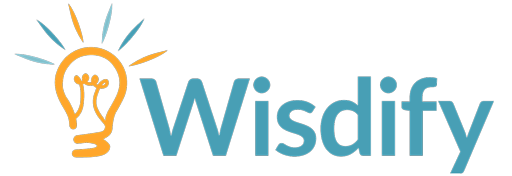Employers review hundreds of resumes for any given position. If you want your resume to impress them enough to get an interview, it must catch their attention within 15-30 seconds. Follow these general resume formatting rules and the sample template to develop a killer resume.
Formatting
The look and feel of your resume is critical. It must be readable, consistent, and succinct. Follow these formatting rules below as you craft your resume:
- Length: Keep your resume to one page. Remember, the employer is reviewing hundreds of resumes so you must communicate your points concisely.
- Font: Stick to easy-to-read, professional font such as Times New Roman, Arial, or Calibri. Font on the whole resume should be the same.
- Font size: Your main text should be in 10-12 point font, though your name and headers should be larger.
- Emphasis: Only use emphasis such as ALL CAPS, bold, italics, or underline for section headers and titles. Make sure you use these consistently (such as all job titles are italicized and company names are bold). Don’t go overboard with emphasis – it should make your resume easier to read, not chaotic.
- Margins: You may need to make slight adjustments to the margins so that your text fits well on the page. Keep your margins between 0.5 and 1.0 inches – otherwise, your resume will be busy or have too much blank space.
- Sections: Break your resume up into distinct sections so the reader can easily find information. These sections include Education, Work Experience, and Additional Make sure that the division between sections is clear and the formatting across sections is consistent.
- Layout: If you are a student or recent graduate, put your education first. After your first job, always put your work experience first. Within each section, put your most relevant bullet points first.
- Bullet points: Use bullet points instead of dense blocks of text to keep the reader’s attention. You want the employer to be able to scan your resume and see important points quickly. Keep bullet points to 1-2 lines. Anything longer will cause the reviewer to lose interest.
- Language: To make your writing tighter, omit pronouns (I, me, my) and begin sentences with verbs. Rather than “I analyzed xyz…” write, “Analyzed xyz…”
What to include on your resume
Contact information
Provide your contact information at the top of the page. Include your name, address, email address, and phone number. Make sure your name stands out the most on your resume by making it larger and adding emphasis. Your email address must be professional. It should be your name rather than your favorite hobby or something cutesy. We have actually seen an email that was sexydancer4728@someemail.com.
Don’t include personal information such as your picture, age, gender, or marital status. None of this information should be anywhere on your resume.
Professional profile (don’t include)
Real estate on resumes is precious, so don’t include a professional profile or summary. This will take up precious space on your page and is rarely taken too seriously. Employers would rather see evidence of your skills than you listing them off.
Education
This section should be the first section if you are a student or recent grad. After your first job, this should move down.
Include the degrees you have received or are pursuing with the most recent first. Include the name of the institution and your date of graduation (or expected date). Include your major/minor as well as any honors. This is also where you can indicate relevant and significant coursework, publications, or projects. See “When to include your GPA on your resume” for information about whether you should include your GPA on your resume.
Work experience
This is where you share your employment history. This includes internships, summer jobs, temporary positions, and permanent positions. For each experience, include:
- the company you worked for
- its location
- your job title
- your dates of employment
- key bullets about your responsibilities and achievements.
You should put your work experiences in reverse chronological order (i.e., with the most recent experience first).
The bullets describing your work experiences shouldn’t read like a job description. You should only briefly describe what you did in each position. Most of the bullet points should highlight what you accomplished.
Quantify as many bullet points as possible (e.g., “Organized an event for 2,000 people…” or “Reduced operating costs by 10%…”). Start each bullet with a strong verb (such as analyzed, strengthened, led, etc.).
Focus on aspects of your past experiences that are most transferable to the position for which you are applying. Give the most space to positions that are most relevant.
Students and entry-level applicants often don’t have much work experience. If this is the case, include past jobs even if they aren’t very similar to the position you are applying for. These will still show a history of dependability and work ethic. Try to pull out examples of skills you developed in these positions that are relevant. For more information, see “What you should put on your resume if you don’t have work experience.” As you gain more work experience you’ll have to be more discerning about what you feature on your resume.
Extra-Curricular
If you have been heeding our advice, you should have some good extra-curricular experience. As a student, you should have a whole section dedicated to the 1 or 2 different clubs or causes you were a part of. You should highlight what role you played within the organization and what you accomplished. After your first job, you should summarize this section as one bullet point under Education.
Skills
Make sure you spotlight key skills on your resume so the employer can quickly see them. This should NOT be a separate section but should fall under the Additional information section. Focus on skills that are required for the position and that set you apart as a candidate. Some examples of skills to include are:
- industry-specific skills
- Excel modeling
- computer programming
- foreign languages
- experience with software programs. Be as specific as possible so that you aren’t providing a generic list.
For more information on how to show your Excel skills on your resume, read this article.
Additional information
If you have limited professional experience, this section is very important. Use this opportunity to highlight leadership, volunteer, and other activities.
Show the skills you developed from these activities that relate to the job you are applying to. Sometimes you might consider creating separate Additional sections. These could be for areas with which you have extensive experiences such as leadership or volunteer work.
Also highlight any qualifications, training, or awards that are not covered elsewhere. You can include interests to give your resume a personal touch, but make sure they are genuine interests that you can talk about extensively. You’d be surprised how many interviews start off with “So, I see that you are a fellow Trekkie as well!”.
How much you include in the Additional Information section depends on
- how applicable it is to the position and
- how much work experience you have.
If you have a lot of related work experience, focus your resume on those experiences. If you have limited work experience, use these activities more to show achievements and skills that qualify you for the position.
The templates
Now that you know exactly what to put on your resume, it’s time to get started! We even created some resume templates to make your life easier. You got this!



